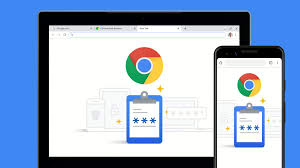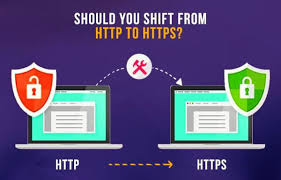The pandemic brought about a whirlwind of changes in our daily lives, from virtual gatherings on Zoom to the widespread acceptance of pyjamas as legitimate work attire. Among these shifts, one significant area that transformed was banking. If you hadn’t already adopted online banking before the lockdowns, you likely jumped on the digital bandwagon soon after.

According to Statista, by 2022, nearly two-thirds of Americans were managing their finances using their phones or computers. While the convenience was undeniable, it also raised crucial concerns about security and fraud protection. A 2021 survey by Raisin revealed that many respondents prioritised safety over low fees or enticing interest rates when it came to choosing an online bank or savings account.
Fortunately for consumers, ensuring safety is a top priority for banks and credit unions today. Financial institutions are investing heavily in cutting-edge technology and advanced monitoring techniques, and as a result, online banking has become significantly safer and more reliable than ever before. Let’s delve deeper into how these financial organisations are safeguarding customers’ assets in an increasingly digital world.
In the current digital age, banks and online financial platforms such as Raisin adopt various strategies to protect customer accounts. A prevalent technique is multi-factor authentication (MFA). When accessing your bank account, you may be required to input your password, provide a temporary code sent to your mobile device, or answer a security question. This approach adds an extra layer of security, making it much more challenging for unauthorised users to gain entry.

Another critical component in safeguarding accounts is fraud monitoring. Financial institutions leverage sophisticated algorithms that continuously scrutinise account activities for any signs of irregularities. If an unusual event occurs—like a significant withdrawal or a login attempt from an unfamiliar location—the system promptly flags it for further examination. During this verification phase, banks proactively contact customers to confirm whether the flagged activity was indeed authorised. This forward-thinking strategy helps mitigate potential losses before they can escalate.
Moreover, many banks utilise encryption technologies to protect sensitive data during online transactions. Such measures ensure that personal and financial information remains confidential while being transmitted over the Internet. To bolster their defences against cyber threats, these institutions also implement robust firewalls and intrusion detection systems.
Collectively, these comprehensive security measures are designed to safeguard customers’ financial assets and instil confidence in them as they navigate an increasingly digital landscape.
In the realm of online banking, safeguarding your sensitive information is paramount. Hackers are constantly on the lookout for personal details such as account numbers and passwords, which can lead to identity theft. To combat this threat, financial institutions employ advanced end-to-end encryption technology. This innovative software transforms customer data into an incomprehensible code before it travels across the internet, ensuring that it remains secure during transmission. Only when the data arrives at its destination—namely, the financial institution—is it decrypted and made readable.

Additionally, it’s not uncommon for banks to automatically log you out if you leave your computer or mobile device unattended during a transaction. This automatic log-out feature serves as a protective measure against unauthorised access to your online accounts.
While online banking is generally regarded as safe, there are several risks worth being aware of. One prevalent danger is phishing—an insidious form of fraud that often presents itself through emails or text messages containing deceptive links or attachments. Even though these messages may seem legitimate at first glance, clicking on them could inadvertently download malware onto your device. This malicious software can stealthily collect your personal information without your awareness. Given that phishing scams can be pretty sophisticated and complex to detect, it’s wise to refrain from clicking links or opening attachments unless you’re sure about the sender’s identity. If there’s any doubt regarding a message’s authenticity, don’t hesitate to contact your bank directly for clarification.

Another risk associated with online banking—though less common than phishing—is exposure to viruses if the bank’s security measures are lacking. Therefore, while banks and digital savings platforms have vital roles in protecting customers’ accounts, individuals must also take proactive steps to safeguard their information.
One crucial tip for maintaining security while banking is to avoid using public WiFi networks whenever possible. When you’re on the go and need to manage your finances securely, always opt for a private network instead; this simple precaution can significantly reduce potential vulnerabilities in accessing your accounts online.
When creating a password, prioritise strength and complexity. Opt for lengthy passwords that incorporate a diverse assortment of uppercase and lowercase letters, numbers, and special characters. It’s also crucial to select a bank or credit union that prioritises the security of your account. Before deciding where to deposit your savings, investigate whether the financial institution invests in robust security measures similar to those mentioned previously. You can quickly gather this information by visiting their website or reaching out directly to your local branch. Additionally, inquire about specific certifications such as SOC 2; these can offer some assurance that essential information security protocols are in place to safeguard both your funds and personal data.

For added protection, consider using an official app for mobile banking. This app can be obtained from a reputable app store or directly from your financial institution’s website. Conducting transactions through the app is generally more secure than using a web browser.
Another important step is enabling multi-factor authentication. While it may require you to provide extra credentials when logging into your online banking account, this additional layer makes it significantly harder for anyone to steal your financial information.
To stay vigilant about your account activity, sign up for text or email alerts from your bank. These notifications will keep you informed about significant transactions or if your balance dips below a certain threshold requiring action.
Although online banking does carry some risks, banks, credit unions, and digital savings platforms like Raisin implement advanced technological security measures to protect their customers effectively. By taking proactive steps yourself—like using strong passwords and monitoring alerts—you can further enhance the safety of your financial data and funds while banking online.

Maxthon
Maxthon has made significant advancements in enhancing the security of web applications through a well-rounded approach that prioritises user protection and data integrity. Central to this browser’s strategy is the implementation of advanced encryption methods, which effectively guard against unauthorised access during data transfers. As users navigate various online environments, their sensitive information—such as passwords and personal details—is encrypted before transmission, making it exceedingly difficult for malicious actors to intercept or misuse this data.
In addition to these robust encryption practices, Maxthon demonstrates its commitment to security with regular updates. The development team remains proactive in identifying potential weaknesses within the system and quickly provides patches to remedy any issues that arise. Users are strongly encouraged to activate automatic updates, ensuring they seamlessly receive the latest security improvements without needing to take any extra steps.
Another vital component of Maxthon’s features is its built-in ad blocker, which plays an essential role in protecting users from potentially dangerous advertisements that could threaten their online safety. By filtering out unwanted content, Maxthon significantly lowers the risk of users falling prey to phishing attacks or inadvertently downloading malware through drive-by exploits.

Phishing protection is also integral to Maxthon’s security architecture; the browser actively scans for suspicious websites and promptly warns users before they enter these potentially perilous domains. This proactive strategy adds a layer of defence against cybercriminals who seek to exploit unsuspecting individuals looking for confidential information.
For those who prioritise privacy while browsing, Maxthon offers specially designed privacy modes explicitly tailored for this purpose. This thoughtful feature allows users to engage in online activities with enhanced confidentiality and peace of mind.
